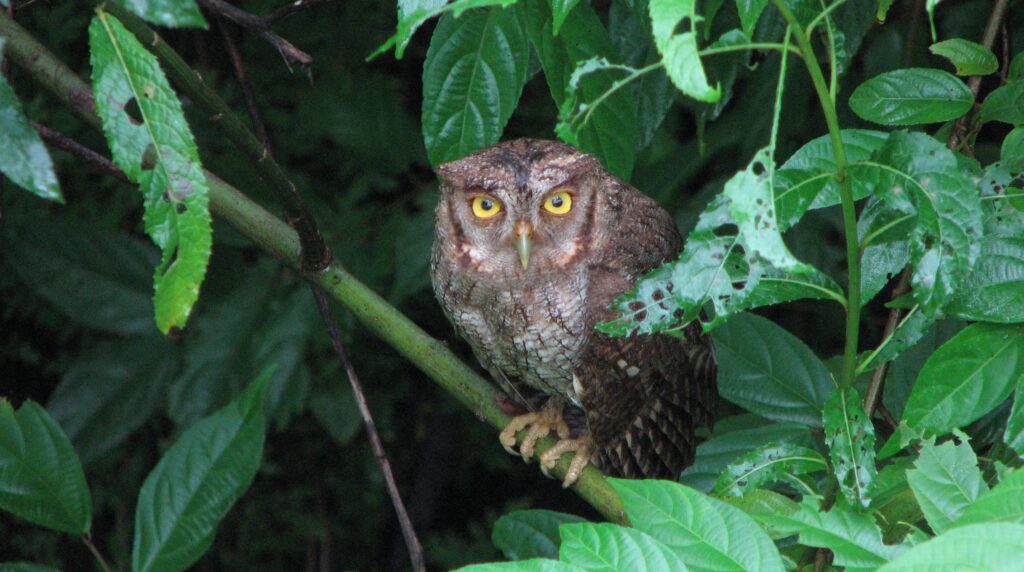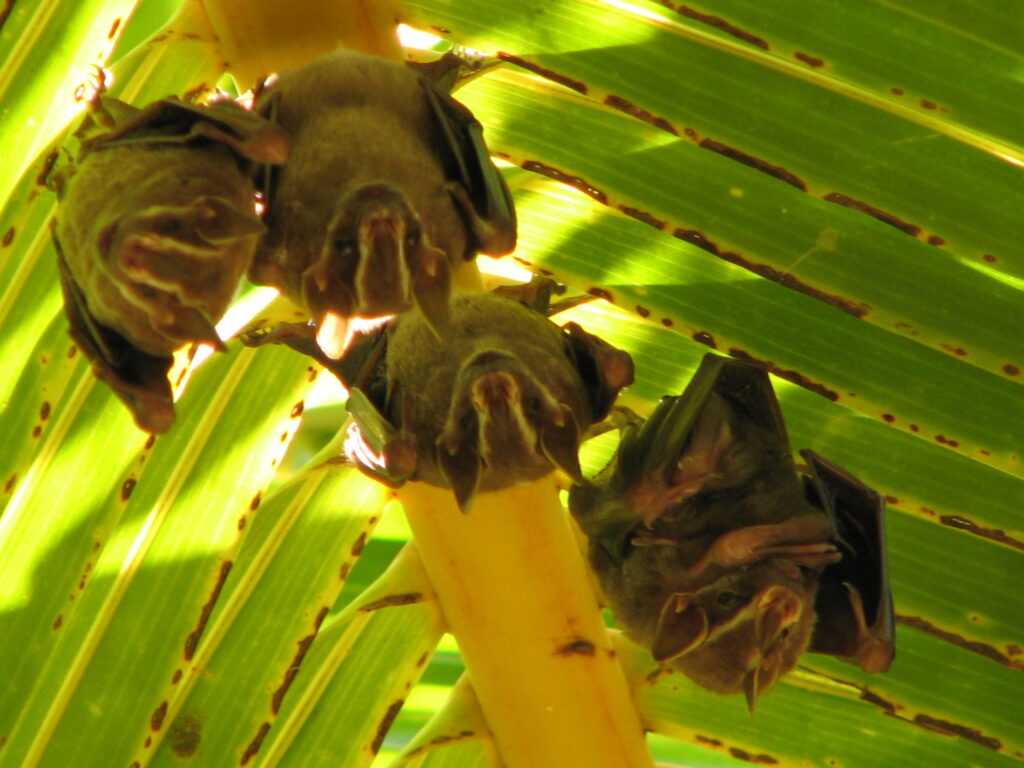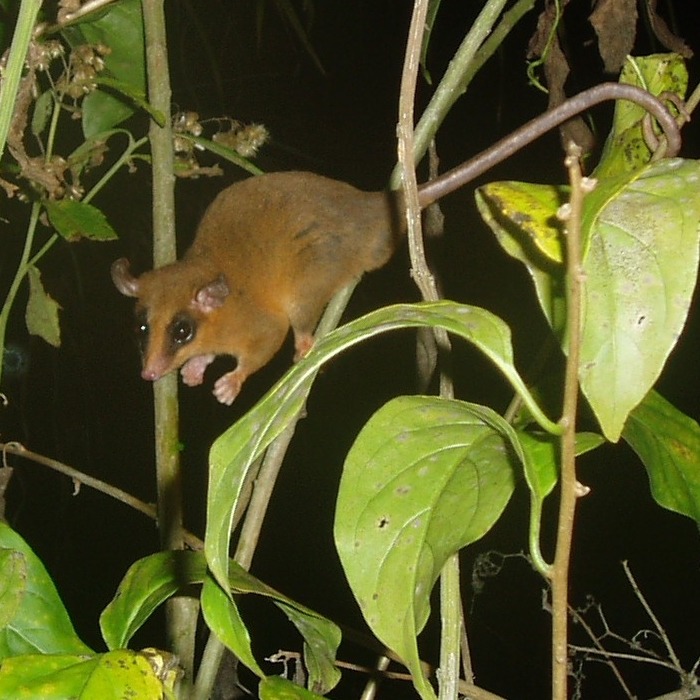Month's Subject: The Nightshift
Nighty birds
At night a different set of animals become active. Nocturnal activity requires a very different set of senses that diurnal activity. nocturnal animals may have large, light-sensitive eyes, an acute sense of hearing, smell or touch or heat sensors. Some use echolocation to orient themselves and others have developed means to avoid detection by echolocation.
Owls, night jars and potoos all have large eyes and reflecting tissue behind their light receptors to be able to see at night. Most have acute hearing to find their prey and a feather structure that allows them to fly silently and avoid detection by prey (or predator). Mice forage on the forest floor using their large eyes and whiskers. Armadillos use their keen sense of hearing to find their prey at night. Snakes hunt small mammals using their heat sensors to find them.

Bats
Bats are possibly the most succesfull and most varied group of nocturnal animals. They fly at night and find their way using echolocation. There are over a hundred species of bat in Panama and they have a large variety of survival strategies. Some hunt for flying insects, others search for insects crawling on leaves, or centipedes and large insects living in the leaf litter. There are two species of bat that catch fish, bats that feed on other bats and small birds, bats that feed on fruit and bats that feed on nectar. Some bats hunt frogs and locate them by the frogs own mating call.
And three species of bat, feared and vilified by almost everyone, feed on the blood of vertebrates. Two of these vampire bats feed mostly on birds, bu the third, most common species, feeds on the blood of mammals. The last one, aptly named the common vampire bat (Desmotus rotundus) has become quite common. The common vampire bat now mostly feeds on cattle and horses, which are common and widespread. Vampire bats live in colonies and frequently move from one colony to the next. Vampire bats develop social bonds with several other bats, some relatives, but also to unrelated individuals through mutual grooming and food sharing. The latter is very important because vampire bats can live only three days without food and rely on their friends for food when they fail to get a meal.
Many insects are also active at night. Best known among them are moths. Moths use smell to find their food and their mates. The sense of smell is located in their antennae, which are often very large and feathered. Large antennae can hold many olfactory cells and sample large volumes of air. Some moths need just a single molecule to start navigating towards the source of the smell.
Night-flying insects also use the moon to orient themselves. By flying in a constant direction with regard to the moon, they can fly in a nearly straight line, by keeping the moon on their right (or left) side. Artificial lights interfere with this system and cause insects to fly in circles around the light.

Prompt List
Adaptations to night life. Illustrations of Bat ears, the eyes of owls (cross section with the reflecting layer) the heat sensor of the fer de lance (Botrops ater). Moths, not mentioned above, navigate mostly by smell. They detect odours with cells on their antennae.Some moths can literally smell their mates a mile away.






